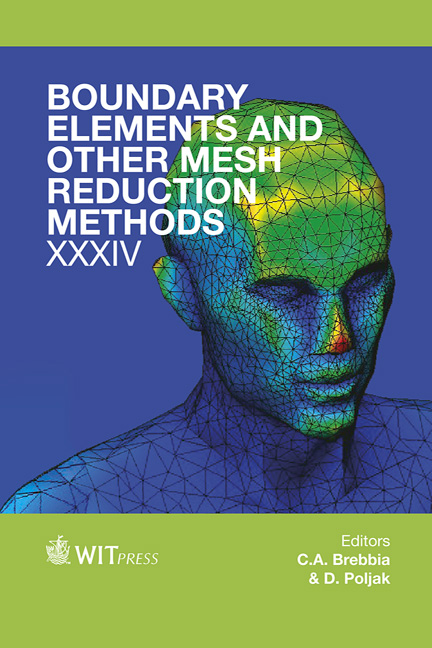A Least Square Solution Applied To Plate Analyses Using The Traction Boundary Integral Equation
Price
Free (open access)
Transaction
Volume
53
Pages
10
Page Range
135 - 144
Published
2012
Size
390 kb
Paper DOI
10.2495/BE120121
Copyright
WIT Press
Author(s)
L. Palermo Jr.
Abstract
The least square method was used to solve an overdetermined system of equations in a boundary element formulation, which had the number of integral equations greater than the number of nodes. The solution with the least square method was so good that a regular solution would present similar accuracy only if a fine mesh was used (i.e. double the number of nodes.)The analysis considered the traction boundary integral equation (BIE) to solve a plate bending problem instead of the displacement BIE. Two formulations for traction BIEs were considered, which had the strong singularity reduced with the tangential differential operator (TDO). The strong singularity was reduced in the first formulation without changing other fundamental solution kernels. In the second formulation, the TDO was applied to all fundamental solution kernels involving the multiplication of generalized displacements to reduce the singularities, and the resulting kernels were combinations of those from the displacement BIE. Keywords: least square solution, traction boundary integral equation, plate bending, Reissner’s model, Mindlin’s model. 1 Introduction Traction BIEs are important when an additional boundary equation is necessary in some problems that do not degenerate solutions using displacement BIEs, like those used in fracture mechanic problems. Strong singularities appear in the fundamental solution kernels of traction BIEs and in stress BIEs at boundary points, which are intrinsically related. The collocation point positions, which are internal points in the boundary element, and the strategy for treating improper integrals are the essential features studied in numerical implementations for
Keywords
least square solution, traction boundary integral equation, plate bending, Reissner’s model, Mindlin’s model.





